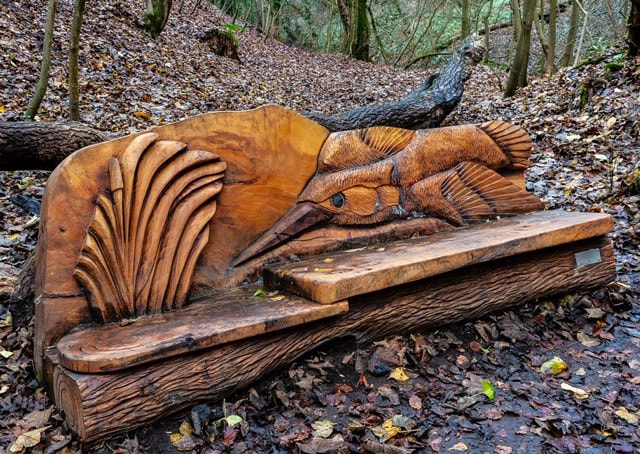
Nowadays we build houses and add a garden. When Skipton Castle was built it was the other way round - they almost certainly built the castle in that spot because the woods were there, providing fuel, building materials, a place to hunt for food and water supplies.
You can see the huge beams taken from oak trees in the Woods, in the banqueting hall of Skipton Castle. 'Locally sourced materials' don't get much more local than that!
Over the years the Woods have changed in purpose, from providing timber and limestone during the industrial revolution, to becoming a pleasure ground.

You can still follow a walk along the watercourses that powered the mills. An offshoot of the famous Leeds to Liverpool Canal was built, called Springs Canal, which transported timber and stone. Water from Eller Beck was used to power a sawmill and corn mill.
In Victorian times, Skipton Castle Woods were a place to go to enjoy the peace and tranquility.
You can now enjoy access to the Woods thanks to an arrangement between the owners of Skipton Castle and the Woodland Trust who lease and maintain the woods.

The Woods support many wildlife including badgers and deer, at least 28 species of bird, as well as butterflies, and five species of bat.
As you wander through the woods, you'll spot oak, lime and beech trees. Look more closely and there are over 160 different plants, grasses and herbs. Many have healing properties - at one time the Castle's herbalist would have used the Woods as their pharmacy.
If you have children with you, you might like to download the details of the geocache trail so they can look out for the treasures hidden in the Woods and find out more about some of the people who lived there. Can you spot the archer and horse willow sculpture made by Anna and the Willow, the bird by Dragon Willow and carved bench made by chainsaw artist Karl Barker?
Thanks to Hazel at Skipton Castle Woods for all images.







 RSS Feed
RSS Feed
